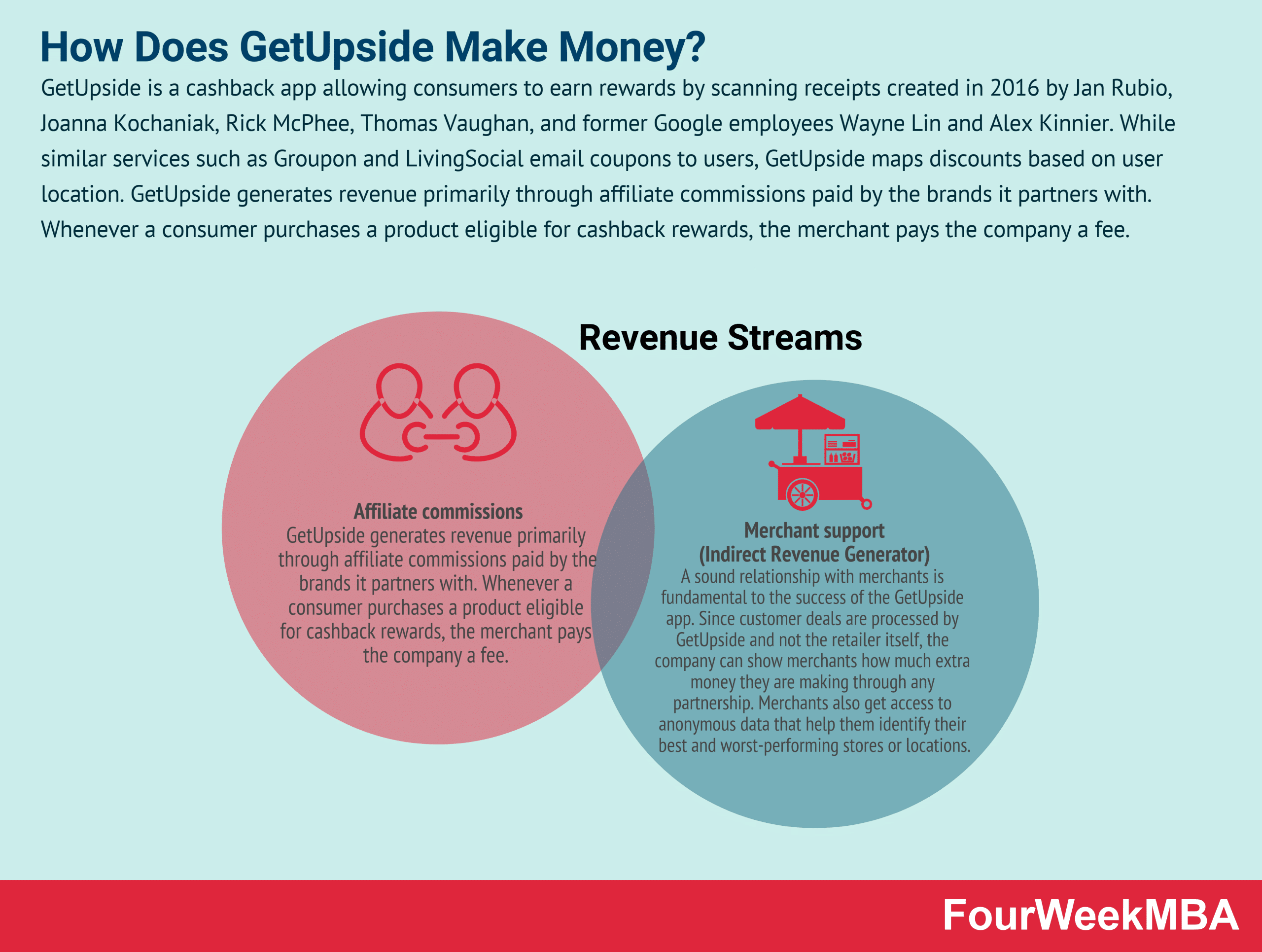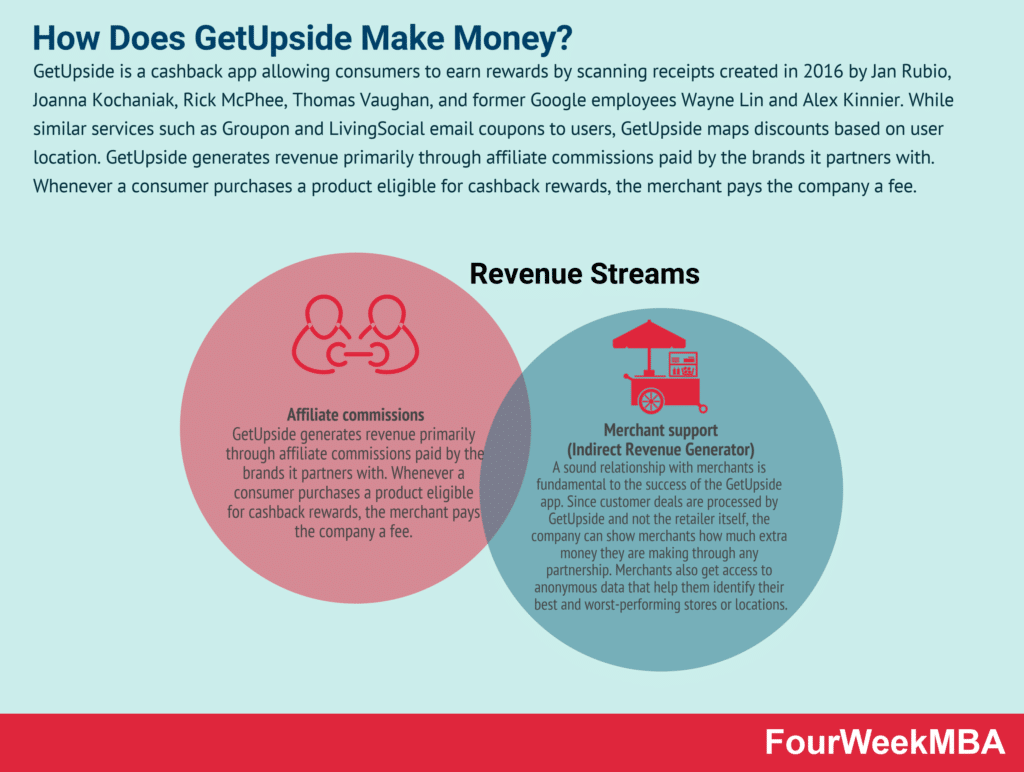Do you ever wonder how Upside makes money? Well, my friend, you’re in the right place! Here’s the lowdown on how this travel company fills its pockets while helping you plan your dream vacations.
So, here’s the deal: Upside is all about combining flights and hotels to save you some serious cash. They have a platform that allows you to book these travel essentials together, getting you a package deal at a discounted rate. But how do they make money if they’re hooking you up with savings? Let’s find out!
Upside makes their moolah through commissions. When you book a flight and hotel through their platform, they receive a portion of the money from the airline and hotel. It’s a win-win. You get a great deal, and Upside gets a little slice of the pie. So, next time you score a sweet travel package, you’ll know how Upside keeps the lights on. Happy travels!

How Does Upside Make Money?
In today’s digital age, many companies have found innovative ways to generate revenue. One such company is Upside, a popular travel platform that offers personalized travel itineraries. But how does Upside make money? In this article, we will explore the various revenue streams that Upside leverages to sustain its business model and provide value to its customers.
1) Commission from Travel Bookings
One of the primary ways Upside generates revenue is through commissions from travel bookings. When users book flights, hotels, or rental cars through the Upside platform, the company earns a percentage of the total booking amount as commission. This commission structure allows Upside to monetize its platform while still providing competitive prices and deals to its users.
By partnering with airlines, hotels, and car rental companies, Upside can negotiate discounted rates and special offers for its customers. These partnerships benefit both Upside and its users, as the company earns commissions, and customers can save money on their travel arrangements.
2) Upside Plus Subscription
In addition to earning commissions from travel bookings, Upside offers a premium subscription service called Upside Plus. For a monthly or annual fee, Upside Plus subscribers gain access to exclusive benefits and perks, such as priority customer support, additional discounts, and personalized travel recommendations.
The subscription revenue from Upside Plus allows the company to diversify its revenue streams and provide an enhanced experience for its most loyal customers. It also incentivizes users to continue booking their travel through Upside, as they can unlock additional value and savings through their subscription.
3) Strategic Partnerships and Advertising
To further monetize its platform, Upside has entered into strategic partnerships with other companies in the travel industry. These partnerships enable Upside to offer additional services and products to its customers, while also generating revenue through revenue-sharing agreements or advertising.
For example, Upside may partner with a luggage company to offer exclusive discounts on luggage purchases to its users. In return, the luggage company pays Upside a percentage of the revenue generated from these promotions. Similarly, Upside may display targeted advertisements on its platform, allowing other companies to reach Upside’s customer base and generate revenue through advertising fees.
4) Data Analytics and Insights
An often overlooked revenue stream for Upside is the valuable data it collects from its users’ travel preferences and behavior. By analyzing this data, Upside can gain insights into consumer trends, preferences, and patterns, which can be used to enhance its offerings and provide a more personalized travel experience.
Upside can also leverage this data to provide valuable insights and reports to its partner airlines, hotels, and car rental companies. For a fee, Upside can provide these partners with anonymized data and analytics, helping them make informed decisions and improve their own services and offerings.
5) Referral Programs
Upside also utilizes referral programs to drive user acquisition and generate revenue. By incentivizing existing users to refer new users to the platform, Upside can expand its user base while rewarding its current customers. When a referred user makes their first booking, both the referrer and the new user receive a reward, typically in the form of travel credits or discounts.
These referral programs not only help Upside acquire new customers at a lower cost but also encourage users to continue using the platform, as they can earn additional rewards for referring their friends and family.
6) Ancillary Services
In addition to its core travel booking services, Upside also offers ancillary services that can generate additional revenue. For example, Upside may sell travel insurance or offer add-ons such as airport transportation or access to airport lounges. These additional services provide convenience and peace of mind to users, while also contributing to Upside’s overall revenue.
By diversifying its offerings and providing a comprehensive travel experience, Upside can capture additional revenue streams beyond traditional travel bookings.
7) Upside API and White-Label Solutions
Lastly, Upside offers an API and white-label solutions to other companies in the travel industry. This allows other platforms and businesses to integrate Upside’s travel booking capabilities into their own offerings, providing a seamless experience for their customers.
By charging licensing fees or revenue-sharing agreements, Upside can generate revenue from these partnerships and expand its reach beyond its own platform.
Benefits of Upside’s Revenue Model
The revenue model employed by Upside offers several benefits to both the company and its users. By earning commissions from travel bookings, Upside can maintain a sustainable business model while still providing competitive prices and deals to its customers.
The Upside Plus subscription service not only generates additional revenue but also rewards loyal customers with exclusive benefits and personalized travel recommendations.
Through strategic partnerships and advertising, Upside can offer a wider range of services and generate additional revenue streams without compromising the user experience. The data analytics and insights gained from user data not only help Upside enhance its offerings but also provide valuable insights to its partners.
Referral programs encourage user acquisition and retention, while ancillary services and white-label solutions diversify Upside’s revenue streams and allow the company to reach a wider audience.
Tips for Maximizing Your Upside Experience
To make the most of your Upside experience, consider the following tips:
1) Become an Upside Plus Subscriber
By subscribing to Upside Plus, you can unlock exclusive benefits and additional discounts, enhancing your overall travel experience and saving money in the process.
2) Take Advantage of Referral Programs
Refer your friends and family to Upside to earn travel credits or discounts. Not only will you reap the rewards, but you’ll also be sharing the benefits of Upside with your loved ones.
3) Explore Upside’s Ancillary Services
Consider adding travel insurance or other ancillary services to your booking to enhance convenience and security during your trip.
4) Provide Feedback and Reviews
Your feedback is important to Upside. By providing reviews and feedback on your travel experiences, you can help Upside improve its offerings and provide even better recommendations to future users.
5) Stay Updated on Upside’s Partnerships and Promotions
Upside regularly partners with airlines, hotels, and other travel companies to offer exclusive deals and promotions. Stay updated on these partnerships to take advantage of additional savings and benefits.
6) Consider Using Upside’s API and White-Label Solutions
If you run a platform or business in the travel industry, explore Upside’s API and white-label solutions to enhance your own offerings and provide a seamless travel booking experience for your customers.
In conclusion, Upside utilizes a diverse range of revenue streams, including commissions from travel bookings, subscription services, partnerships and advertising, data analytics, referral programs, ancillary services, and API/white-label solutions. This multi-faceted revenue model allows Upside to sustain its business while providing value to its users. By maximizing your Upside experience and taking advantage of the various offerings and benefits, you can make the most of this innovative travel platform.
Key Takeaways: How Does Upside Make Money?
- Upside makes money by charging a service fee to customers who book travel through their platform.
- They also earn revenue through partnerships with airlines, hotels, and other travel companies.
- Upside negotiates discounted rates with suppliers and earns a commission on the bookings made through their platform.
- Additionally, they offer corporate travel management services, which generate revenue through service fees and commissions.
- Upside’s business model revolves around providing cost savings and convenience to both individual and corporate travelers.
Frequently Asked Questions
Welcome to our frequently asked questions section! Here, we’ll answer some common questions about how Upside makes money.
1. How does Upside earn revenue?
Upside generates revenue by acting as a travel agency and earning a commission from the airlines and hotels it partners with. When you book a flight or hotel through Upside, they negotiate special deals with suppliers and earn a portion of the price you pay. This allows them to offer exclusive discounts and perks to their customers while still making a profit.
Additionally, Upside offers businesses a corporate travel platform to manage their employees’ travel arrangements. For this service, they charge a subscription fee or a percentage of the total travel spend. This way, Upside can cater to both individual travelers and corporate clients, diversifying their revenue streams.
2. Do I have to pay extra fees when booking through Upside?
No, booking through Upside does not incur any extra fees for travelers. The prices displayed on their platform already include their commission and any applicable taxes and fees. Upside aims to provide transparent pricing to its customers, so you won’t encounter any surprises when completing your booking.
It’s important to note that while Upside doesn’t charge additional fees, they do have a minimum booking requirement to access their travel deals. This ensures that they can negotiate the best prices and incentives for their customers and offer a value-added service.
3. How does Upside ensure competitive prices?
Upside has partnerships with various airlines and hotels, allowing them to access exclusive pricing and deals. They use proprietary technology and algorithms to search for the best combinations of flights and hotels that result in cost savings. This enables them to offer competitive prices to their customers.
In addition to securing advantageous rates, Upside also uses its negotiation power to secure additional perks, such as free upgrades or amenities, to enhance the customer’s travel experience. By leveraging these partnerships and perks, Upside aims to provide its customers with the best value for their money.
4. How can Upside offer cash back on bookings?
Upside’s cash back program allows customers to earn a portion of the commission earned by Upside when they book through the platform. This cash back is made possible by the commission Upside receives from the suppliers. By sharing part of their earnings with customers, Upside incentivizes travelers to continue using their services for future bookings.
The cash back amount is determined by the total price of the booking and can be redeemed for various gift cards or even as cash through select payment methods. This cash back program is one of the ways Upside rewards its loyal customers while also encouraging repeat business.
5. Can businesses save money by using Upside?
Absolutely! Businesses can save money by using Upside’s corporate travel platform. By consolidating their employees’ travel bookings through Upside, companies can access negotiated discounts and perks that are not available to the general public. These savings can add up significantly, especially for businesses with a high volume of travel.
Additionally, Upside’s platform provides businesses with a streamlined way to manage travel expenses and policies, helping them identify cost-saving opportunities and reduce administrative overhead. By utilizing Upside’s corporate travel solution, companies can optimize their travel expenses while ensuring a smooth travel experience for their employees.
How Does Upside Work? Does it Actually Help Save Money On Gas?
Summary
So, here’s what you need to know about how Upside makes money. Upside is a travel company that earns its revenue by providing a service fee to its customers for helping them find, book, and manage their travel plans. They also generate income by partnering with travel suppliers and earning a commission from the bookings made through their platform. In addition, Upside offers a premium membership called “Upside Lite” that provides extra benefits for a monthly fee. Through these sources, Upside is able to generate income and continue serving its customers with great travel experiences.
In conclusion, Upside makes money through service fees, commissions from travel bookings, and a premium membership called Upside Lite. By offering these services, Upside is able to provide a user-friendly platform and help people enjoy their travels while earning revenue to sustain its operations.

